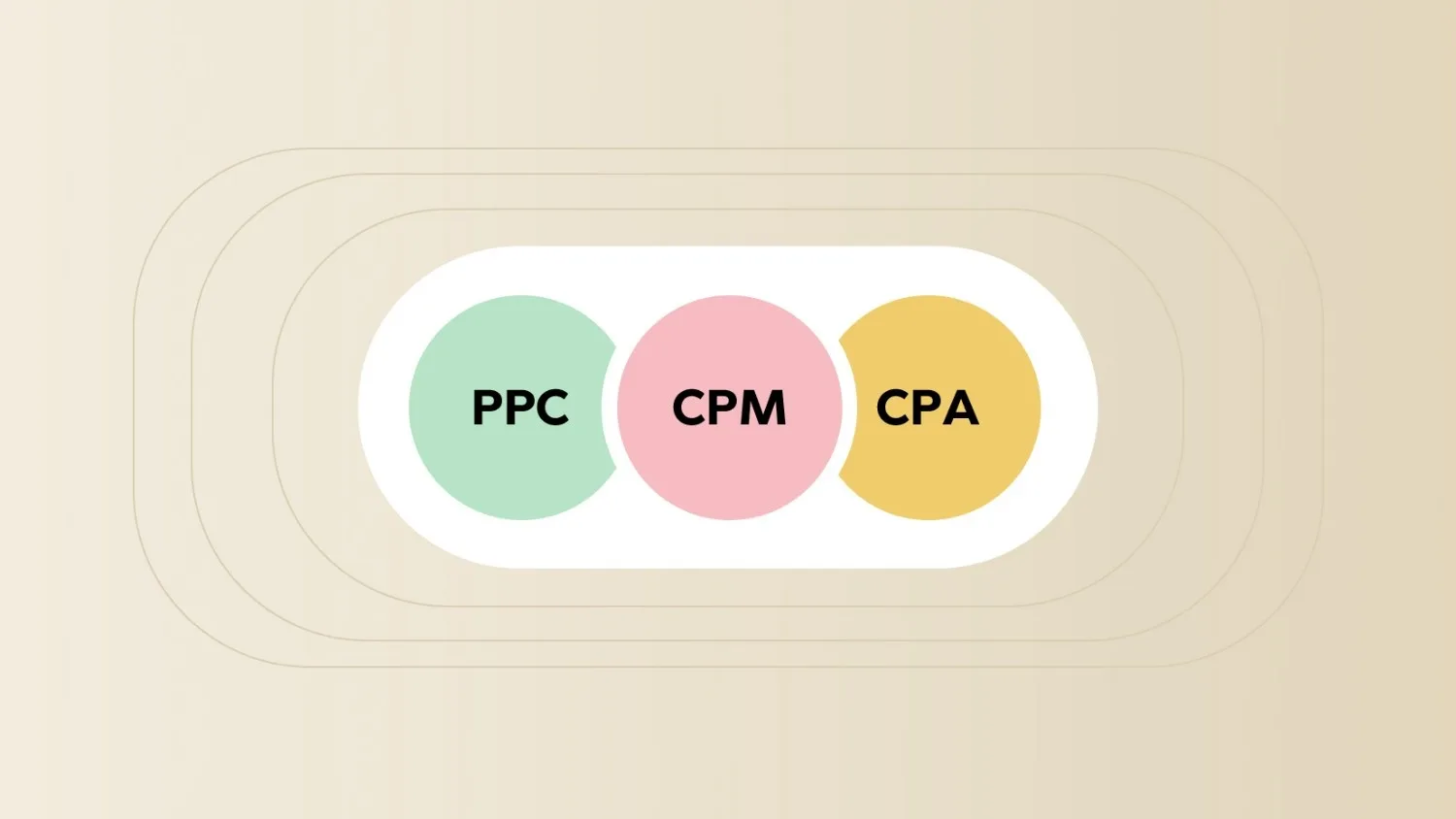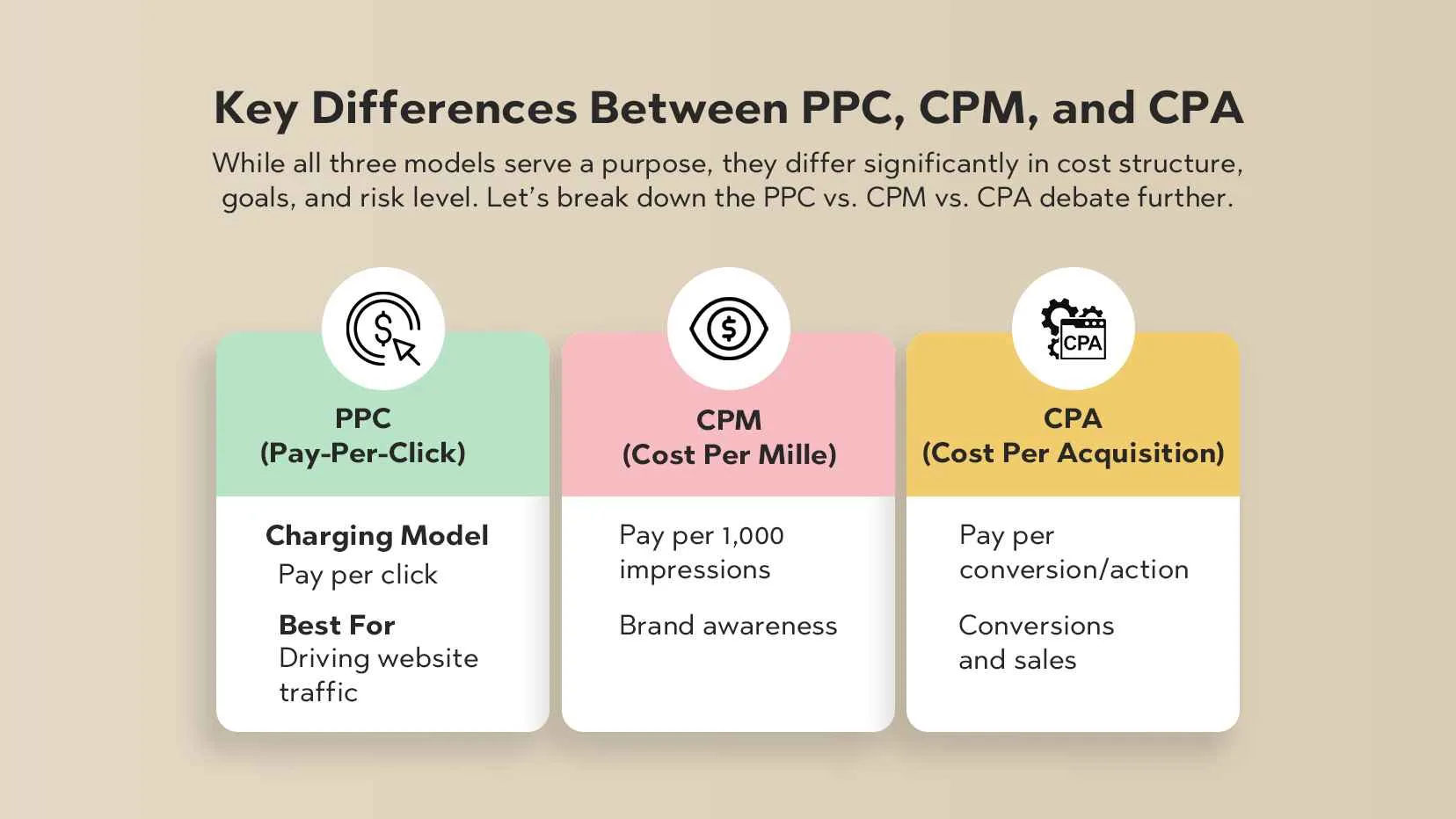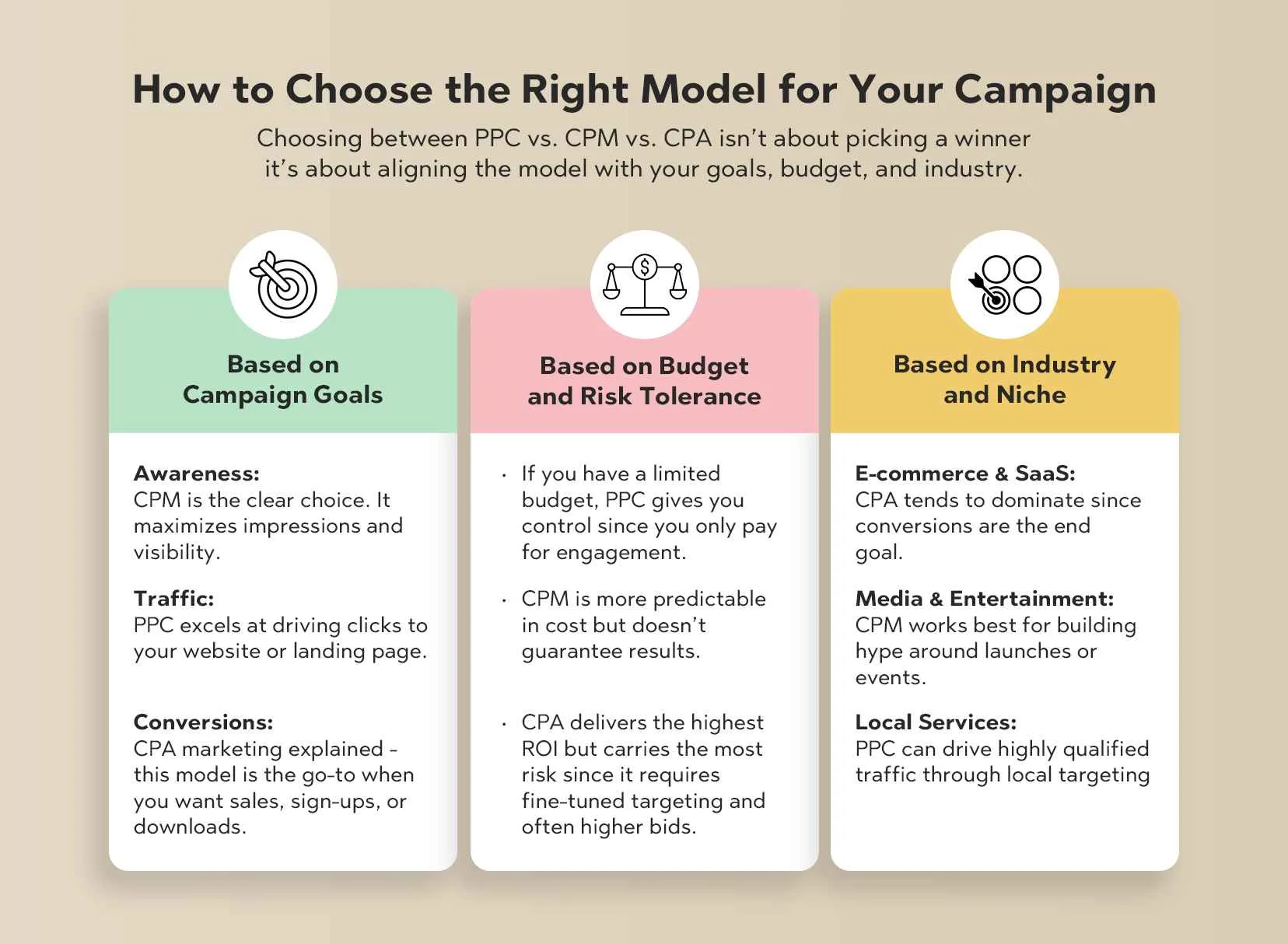Rahul Guleria
SEO Executive

Online advertising has become one of the most effective ways for brands to reach customers. But before you launch a campaign, you need to decide how you’ll pay for it. That’s where the debate around PPC vs. CPM vs. CPA comes in. These three models are the backbone of digital advertising, and understanding how each works can make or break your ROI.
Pay-Per-Click, often shortened to PPC, is one of the most widely used advertising models. In this approach, you only pay when a user clicks on your ad. Whether it’s a Google Search ad, a banner on a website, or a sponsored post on social media, PPC ensures that your budget goes toward actual engagement rather than just impressions.
PPC is particularly powerful when your primary objective is driving traffic to a landing page or e-commerce store. For example, an online retailer could run PPC ads targeting keywords like “best running shoes 2025”. Each click represents an interested customer ready to learn more.
Think of PPC as performance-focused. You’re not paying for visibility alone—you’re paying for people to take that first step into your sales funnel.
Next, let’s break down CPM, or Cost Per Mille. “Mille” means one thousand, so advertisers pay for every 1,000 impressions their ad receives. Unlike PPC, it doesn’t matter whether users click on the ad or not.
CPM is all about reach and visibility. It’s the go-to option for campaigns where the goal is building brand awareness, not immediate conversions. Imagine a luxury car brand launching a new model—they might run CPM ads on lifestyle and auto websites to maximize exposure.
It’s ideal for campaigns targeting top-of-funnel audiences who may not be ready to buy yet but need repeated exposure to the brand message.
Finally, CPA marketing—also known as Cost Per Acquisition or Cost Per Action—is all about results. With this model, advertisers only pay when a user takes a specific action. That action could be purchasing a product, signing up for a newsletter, or downloading an app.
This performance-based model is the most ROI-driven but also the riskiest. Since you only pay for actual conversions, the costs per action tend to be higher. However, it ensures every dollar you spend is tied directly to outcomes.
CPA is best suited for advertisers with clear goals, such as e-commerce brands looking to boost sales or SaaS companies driving sign-ups.
If you’re new to paid advertising, start with our complete guide on What is Paid Media Advertising.
While all three models serve a purpose, they differ significantly in cost structure, goals, and risk level. Let’s break down the PPC vs. CPM vs. CPA debate further.

Feature | PPC (Pay-Per-Click) | CPM (Cost Per Mille) | CPA (Cost Per Acquisition) |
|---|---|---|---|
Charging Model | Pay per click | Pay per 1,000 impressions | Pay per conversion/action |
Best For | Driving website traffic | Brand awareness | Conversions and sale |
Risk Level | Medium | Low | High |
For instance, a startup might start with CPM ads to raise awareness, then shift to PPC to bring in traffic, and finally use CPA to convert leads into paying customers.
The key is understanding not just what each model does but how it aligns with your business objectives.
Choosing between PPC vs. CPM vs. CPA isn’t about picking a winner—it’s about aligning the model with your goals, budget, and industry.

In practice, many advertisers experiment with all three to see which drives the best results for their niche.
In today’s complex digital landscape, many brands find success by combining models. Instead of choosing strictly between PPC vs. CPM vs. CPA, they use a hybrid approach to cover multiple goals.
For example, a fashion brand launching a new collection could:
The hybrid model balances reach, engagement, and results, making it especially effective for growing businesses.
When comparing PPC vs. CPM vs. CPA, it’s clear that each has its place in a marketer’s toolkit.
The right choice depends on where your audience is in the buyer’s journey and what your campaign objectives are. In many cases, a hybrid approach delivers the strongest results.
Ultimately, the smartest advertisers test, measure, and optimize continuously. Start small, compare performance, and adjust your budget allocation until you find the balance that maximizes your ROI.
PPC charges per click, CPM charges per 1,000 impressions, and CPA charges per conversion.
CPA is the most conversion-focused since you only pay when a user takes a specific action.
CPM is usually cheaper per impression, but it doesn’t guarantee engagement or conversions.
Yes, many advertisers use hybrid models to balance reach, traffic, and conversions.
It depends on your goals—awareness (CPM), traffic (PPC), or conversions (CPA).
It varies by industry, but generally, a good CPA is one that keeps acquisition costs lower than customer lifetime value (CLV).
Yes. Google Ads offers PPC, CPM (for display campaigns), and CPA (through Smart Bidding).
Often yes, since e-commerce campaigns are conversion-driven. But PPC is useful for traffic generation.
CPA can be costlier and requires precise targeting. If poorly managed, it may limit reach.
Use analytics tools to measure clicks, impressions, and conversions. Then calculate ROI based on total spend vs. revenue generated.
Yes. Google Ads offers PPC, CPM (for display campaigns), and CPA (through Smart Bidding).